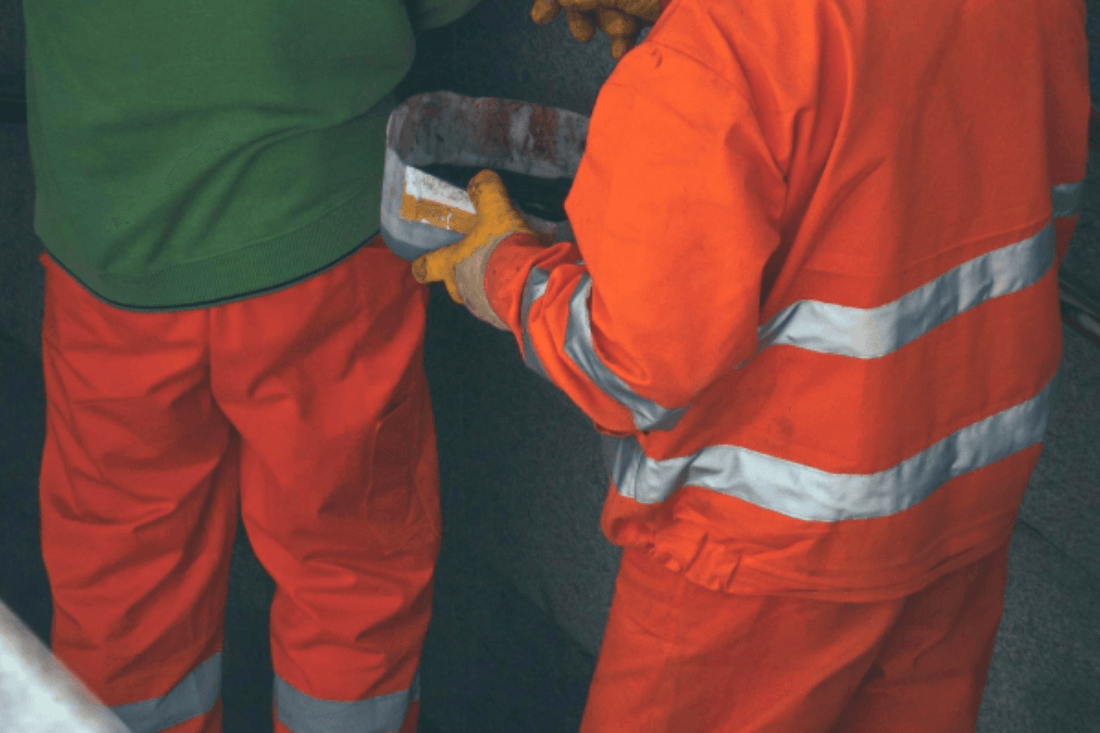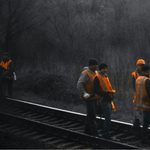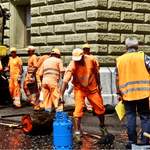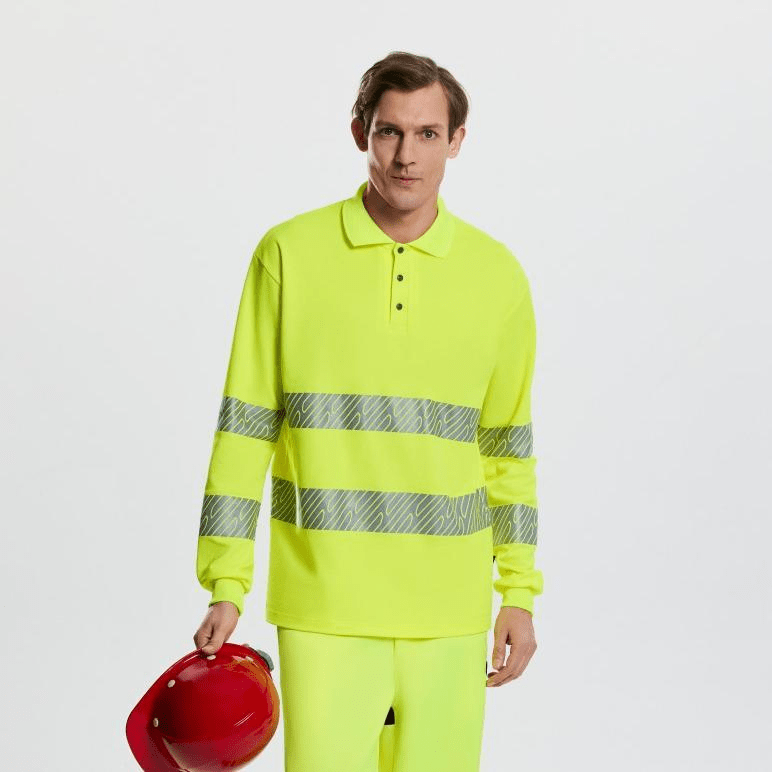
Impatto di diverse condizioni di luce su abbigliamento ad alta visibilità (hi-vis)
30 December 2024
Condividere
L'impatto delle diverse condizioni di luce sugli indumenti ad alta visibilità (Hi-Vis)
L'abbigliamento ad alta visibilità (Hi-Vis) svolge un ruolo fondamentale per la sicurezza di lavoratori, pedoni, ciclisti e automobilisti, garantendo la visibilità in ambienti ad alto rischio di incidenti. Che si tratti di cantieri edili, strade, aeroporti o durante le operazioni notturne, l'abbigliamento ad alta visibilità è progettato per rendere le persone più visibili in aree scarsamente illuminate e ad alto traffico. Tuttavia, l'efficacia dell'abbigliamento ad alta visibilità può essere influenzata da diverse condizioni di luce, come la luce diurna, il crepuscolo e la notte. Comprendere come le diverse condizioni di illuminazione influiscano sulla visibilità degli indumenti ad alta visibilità è fondamentale per migliorare la sicurezza in diversi ambienti di lavoro.
1. Condizioni di luce diurna: luminosa e limpida
Durante le ore diurne, gli indumenti ad alta visibilità sono generalmente più efficaci. La combinazione della luce solare naturale e delle proprietà riflettenti dei tessuti fluorescenti (spesso in giallo neon, arancione o verde) garantisce la massima visibilità. Questi colori sono altamente visibili perché si trovano al massimo della sensibilità dell'occhio umano in termini di lunghezza d'onda, in particolare nello spettro giallo-verde. Indossati durante il giorno, gli indumenti ad alta visibilità, in particolare quelli con materiali fluorescenti, appaiono luminosi e accattivanti per conducenti, operatori di macchinari e altre persone nelle vicinanze.
Fattori che influenzano la visibilità alla luce del giorno:
- Luminosità del colore: I colori fluorescenti, come il giallo neon o l'arancione, sono più efficaci se esposti alla luce naturale.
- Nastro riflettente: I materiali o i nastri riflettenti sugli indumenti ad alta visibilità riflettono la luce del sole verso una fonte luminosa, garantendo che chi li indossa sia visibile anche a distanze maggiori.
- Contrasto: Gli indumenti ad alta visibilità con motivi scuri e chiari a contrasto possono essere più visibili alla luce diretta del sole, poiché il contrasto rende l'indumento più visibile all'occhio umano.
2. Crepuscolo e tramonto: transizione tra luce e oscurità
Al tramonto o al sorgere del sole, il passaggio dalla luce del giorno all'oscurità, o viceversa, può ridurre significativamente la visibilità. Al crepuscolo, i livelli di luce ambientale sono più bassi e i colori meno vivaci. È in questo momento che le proprietà riflettenti degli indumenti ad alta visibilità diventano ancora più critiche. In questo momento, i tessuti fluorescenti più luminosi possono perdere la loro visibilità e nastri e strisce riflettenti diventano l'elemento principale che mantiene visibili i lavoratori.
Fattori che influenzano la visibilità al crepuscolo:
- Oscuramento della fluorescenza: I colori fluorescenti sono meno efficaci in condizioni di scarsa illuminazione perché la loro capacità di "brillare" diminuisce man mano che la luce circostante si affievolisce.
- Dipendenza dalla riflessione: Con la diminuzione della luce ambientale, l'efficacia degli elementi riflettenti, come nastri, strisce e pannelli, diventa sempre più importante. Questi elementi riflettono i fari dei veicoli o altre fonti luminose, garantendo la visibilità in ambienti scarsamente illuminati.
- Mancanza di contrasto cromatico: In condizioni di luce fioca, il contrasto tra gli indumenti ad alta visibilità e l'ambiente circostante può diminuire. Le strisce riflettenti luminose diventano fondamentali per mantenere la visibilità.
3. Condizioni notturne: luce ambientale scarsa o assente
Di notte, l'importanza dei materiali riflettenti sugli indumenti ad alta visibilità non può essere sopravvalutata. In completa oscurità o in aree con scarsa illuminazione ambientale, le proprietà fluorescenti degli indumenti ad alta visibilità offrono scarso aiuto. In queste condizioni, i materiali riflettenti sugli indumenti (come nastri e tessuti retroriflettenti) sono il mezzo principale per garantire la visibilità.I materiali riflettenti sono progettati per riflettere la luce direttamente verso la fonte, come i fari dei veicoli, rendendo chi li indossa visibile anche da una distanza considerevole.
Fattori che influenzano la visibilità notturna:
- Riflettività sulla fluorescenza: Sebbene i colori fluorescenti siano molto efficaci durante il giorno, sono praticamente inutili nell'oscurità più completa. Di notte, i materiali riflettenti come lo Scotchlite o altri tessuti retroriflettenti hanno la precedenza.
- Prossimità della sorgente luminosa: Quanto più vicina è la sorgente luminosa (e.g., fari di veicoli o lampioni), più efficacemente funzioneranno le strisce riflettenti. Tuttavia, a distanze maggiori o con fari più deboli, la riflettività potrebbe diminuire e chi le indossa potrebbe essere a rischio.
- Luminosità dei materiali riflettenti: Maggiore è la riflettività dei materiali utilizzati, maggiore è la sicurezza per l'individuo di notte. I materiali retroriflettenti, se applicati in strisce larghe e larghe, possono offrire un'eccellente visibilità in ambienti scarsamente illuminati o bui.
4. Condizioni meteorologiche avverse
Anche le condizioni meteorologiche, come pioggia, nebbia o neve, possono influire drasticamente sull'efficacia degli indumenti ad alta visibilità. In caso di pioggia o nebbia, la visibilità e la visibilità risultano ridotte. Le proprietà riflettenti degli indumenti ad alta visibilità sono spesso più critiche in queste situazioni, poiché la luce ambientale viene ulteriormente attenuata dalle condizioni meteorologiche.
Fattori che influenzano la visibilità in caso di maltempo:
- Acqua e Riflessi: A volte la pioggia può migliorare le qualità riflettenti degli indumenti ad alta visibilità, facendo sì che l'acqua rifletta la luce in modo più efficace. Tuttavia, l'esposizione prolungata all'acqua può far perdere efficacia ai nastri riflettenti se non adeguatamente sigillati.
- Nebbia e visibilità: La nebbia può ridurre significativamente la visibilità, rendendo difficile per conducenti e lavoratori vedersi a vicenda anche a breve distanza. In queste condizioni, gli indumenti ad alta visibilità con ampie aree riflettenti sono essenziali per compensare la ridotta visibilità.
- Neve e luminosità: La neve può fungere da superficie riflettente, aumentando la visibilità dei colori fluorescenti durante il giorno. Tuttavia, in assenza di una forte luce solare, la neve può anche rendere più pericolose le condizioni di scarsa illuminazione, rendendo necessario l'uso di indumenti ad alta visibilità con elevate qualità retroriflettenti per garantire la sicurezza notturna.
5. Condizioni di illuminazione artificiale
In ambienti come magazzini, fabbriche o strade illuminate, gli indumenti ad alta visibilità devono essere efficaci anche in condizioni di illuminazione artificiale. Il tipo di luce, che sia LED, alogena o fluorescente, può influenzare le prestazioni di un capo riflettente.
Fattori che influenzano la visibilità sotto illuminazione artificiale:
- Intensità e direzione dell'illuminazione: Un'illuminazione artificiale intensa e concentrata può aumentare l'efficacia degli indumenti riflettenti, ma se la luce è diffusa o proviene da un angolo, le strisce riflettenti potrebbero non funzionare altrettanto bene. Un corretto allineamento dell'illuminazione può migliorare la riflettività degli indumenti ad alta visibilità.
- Tipo di luce: Alcune fonti luminose, come le luci a scarica ad alta intensità (HID), potrebbero essere meno efficaci nel migliorare la visibilità dei materiali retroriflettenti rispetto all'illuminazione alogena o a LED.
Post prev

Abbigliamento da lavoro ad alta visibilità: 2025 Guida all'acquisto e consigli
Aggiornato su 06 March 2025
Next post

I diversi colori dei giubbotti hi-vis: miglioramento della sicurezza in ogni ambiente
Aggiornato su 30 December 2024


